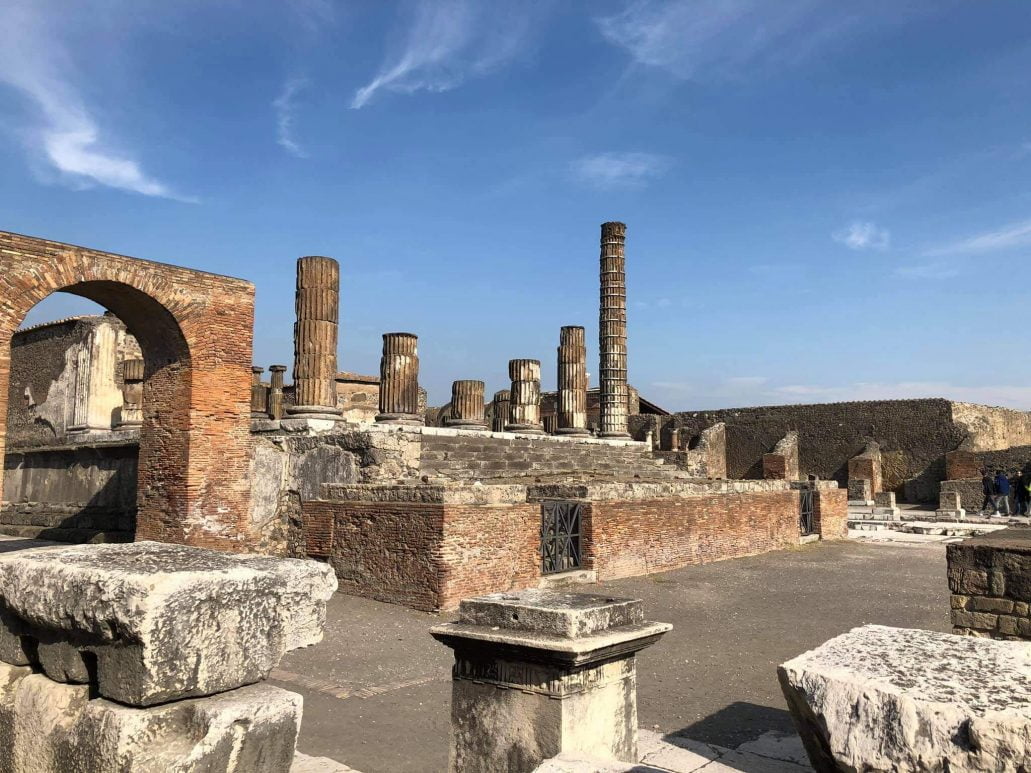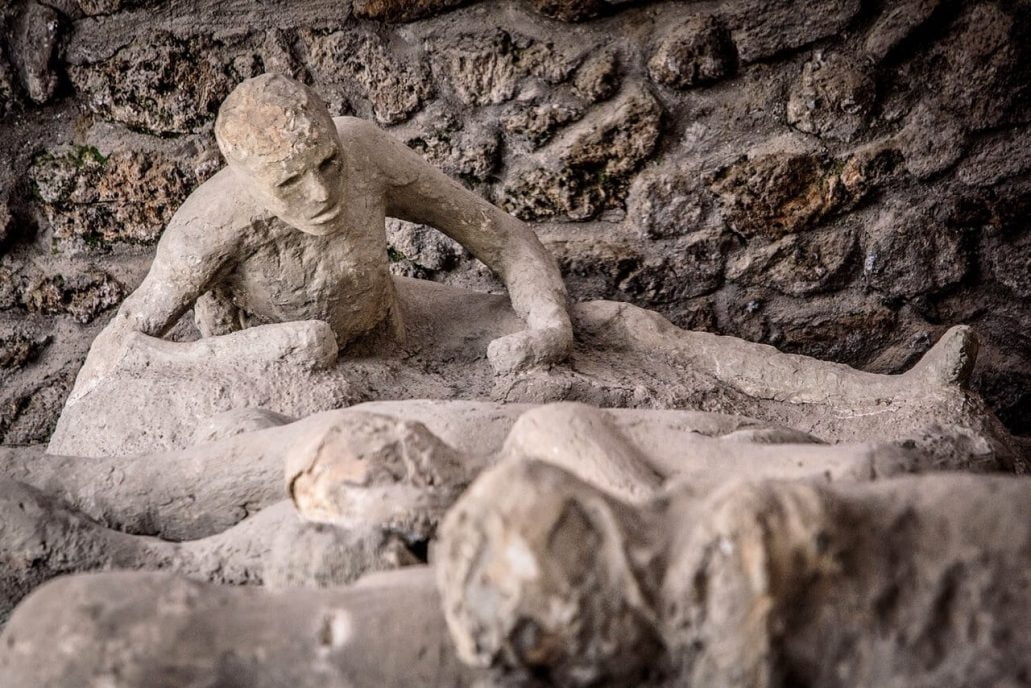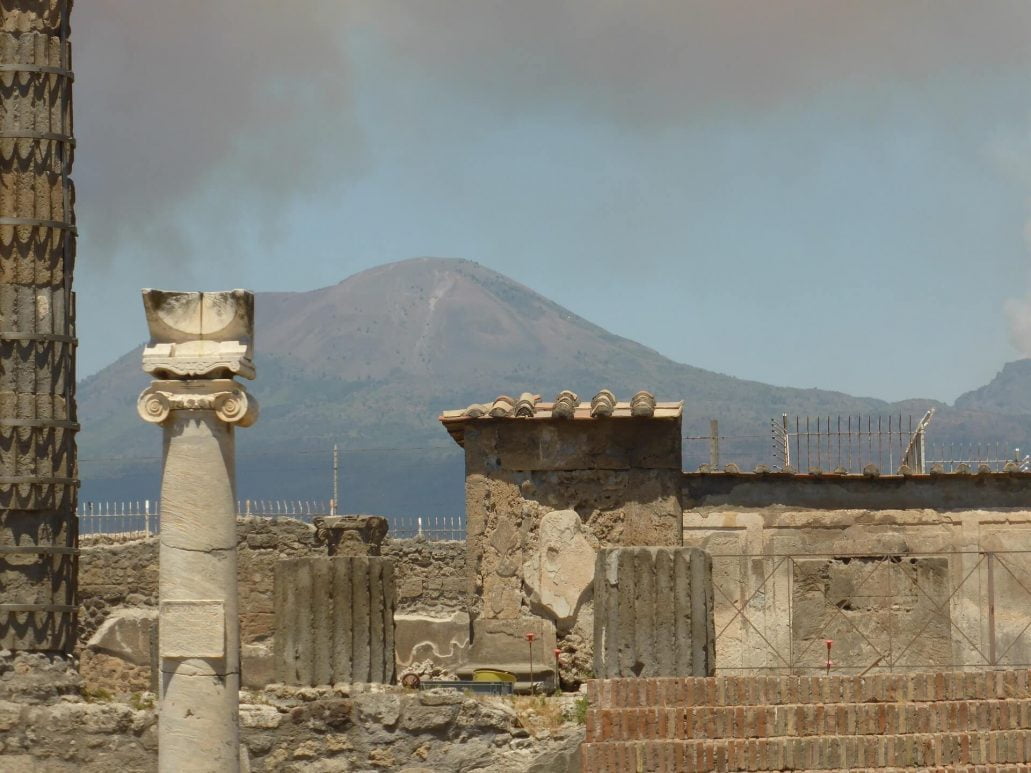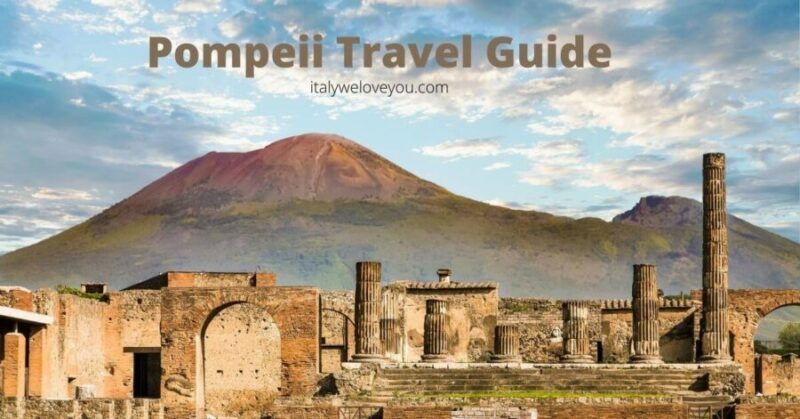13 Best Things to Do in Pompeii, Italy
Pompeii is a charming town with a population of around 25,000 located near Naples. It is known worldwide as the location where the eruption of Vesuvius in 79 BC halted time.
The ash and lapilli from the eruption covered everything for centuries, and its excavations, a UNESCO heritage site since 1997, provide one of the most remarkable testimonies of a past that remains alive even today.
Pompeii has history dates back to almost the same time as Rome. It was founded in the 8th century BC, and its tragic end, caused by the eruption of Vesuvius in 79 AD, brought it enormous fame.
Since the excavations started in 1748, the town has regained its popularity, giving visitors a chance to rediscover its beauty and witness the lifestyles of its inhabitants. Pompeii conceals a world of history and architecture that has remained so incredibly pristine that it still possesses a magical quality today.
Archaeological Park of Pompeii

Today Pompeii is a very large archaeological site. So how much time should you spend visiting the Pompeii ruins? The excavations of Pompeii cover 44 square kilometers, and it would take at least two days to visit this vast area. Realistically, expect a visit of about 4 hours, because beyond that it would be very tiring, especially if it’s warm.
To take the opportunity to immerse yourself in a journey into the past, it is advisable to get tickets in advance to avoid long waits. Every day, in fact, the ancient Roman town is visited by thousands of tourists.
It is also advisable to equip yourself with a pair of hiking shoes and dress in layers, with clothes that are easy to take off if it is particularly hot. Also useful is bring plenty of water, snacks to eat and sunscreen.
To make the most of the day, it is advisable to start the tour as soon as the archaeological park opens. The departure is from the entrance of Porta Marina (via Villa dei Misteri). As soon as you enter, you are catapulted back in time. The street, made up of stone slabs, is very well preserved, as are the walls of the houses, the shops, the buildings, and the temples.
Forum at Pompeii

Within the archaeological excavations, the Forum was the beating heart of the city, a religious, economic and cultural centre, as well as a place for political debates.
The Forum also represented the place of justice and in fact in the square we find the administrative offices of the civil life of Romans. It is interesting to know that at the time of the eruption the Roman civilization was going through a period of election campaign and even today, on the walls, it is possible to find traces of incitement to the various candidates.
In the 2nd century BC the Forum was enlarged: the traditional tuff flooring was replaced by that of travertine, still widely used today and the square was enriched with numerous artisan shops and public buildings.
Do not miss also to visit the granaries of the Forum, the ancient fruit and vegetable market, now used as a deposit for finds deriving from the archaeological area, such as many amphorae, braziers, a chest that served as a safe, casts, etc. …
At the center of the Forum stands the temple of Apollo, one of the oldest buildings of worship in Pompeii. In this place, various deities were worshiped, including Apollo and Mercury. A portico with 48 columns framed the majestic altar in white marble, on the left instead there was a sundial and then access to the cell that kept the image of the divinity. Today the original bronze statue of Apollo is kept in the Archaeological Museum of Naples.
The nearby Temple of Jupiter was built in maximum urban expansion and became the main sacred structure in the area. It was later dedicated to the Capitoline Triad: Jupiter, Juno, and Mars. The Temple of Jupiter has a staircase that leads to a high podium that preserves the cell where the statue of Jupiter was found: today, only his head remains.
Amphitheatre of Pompeii

Taking via dell’Abbondanza, you reach the Amphitheater, an ancient stone building dating back to 80 BC. It is among the oldest and best-preserved amphitheaters. It was the scene of bloody battles among gladiators and had a capacity of 20,000 spectators; you can easily reach it from the Forum.
The arena was accessed through a tunnel. Unlike the other Roman amphitheaters, the Pompeian one has no underground areas. In the upper part, there are visible holes used to support the covering of the arena in order to protect spectators from both too hot sun and rain.
Adjacent to the Amphitheater, we find the large gymnasium, where young gladiators trained for the fighting: an area of 140 x 130 meters with an area used for sports activities, surrounded by a high wall and a double line of Ionic columns on three sides.
House of the Faun

Among the buildings not to be missed is the Casa del Fauno (House of the faun), located not far from the Forum, in via della Fortuna. This ancient Roman villa occupies about 3,000 square meters within the archaeological excavations and is one of the town’s oldest and most majestic houses.
It probably belonged to a prominent member of the Roman nobility. It owes its name to the Faun, the Roman divinity of woods and nature: his small bronze statue is located in the atrium, in the center of the “impluvium.”
Surrounded by large gardens, the structure is characterized by different environments: bathrooms, a stable spa and kitchen, and reception rooms. The floors are covered with mosaics, such as the one that depicted the victory of Alexander the Great over Darius, king of Persia.
Pompeii Theaters

Located a short distance from the Casa del Fauno is the Large Theater, built in the 2nd century BC. The horseshoe-shaped steps were built by exploiting the cavity of the slope. The structure could accommodate about 5,000 spectators and a mobile tarpaulin sheltered the spectators from the elements. The whole building was adorned with statues and marble. The theater is still in use: plays have recently been staged.
The Small Theater is instead a building built between 80 and 75 BC. At the time, musical performances and poetry recitations entertained audiences of around 1,300 people. The spectators sat according to the political and social class they belonged to, divided into three different areas, decorated according to their wealth.
Domus Pompeii

Other historic buildings in Pompeii were the “domus”: buildings of a style halfway between the Italic domus and the Greek house. About 70% of the urban area of the town was made up of houses.
The dimensions of the houses vary according to the social class of the owners, but they maintain the same architectural canons: a rectangular plan, no windows, essential furniture and development on two levels.
House of Sallust

The Sallustio’s House, dating back to the 2nd century BC, contains the typical elements of a rich and well-kept “domus”. This domus of the Pompeii excavations owes its name to an electoral inscription on its walls. Initially excavated in the early nineteenth century, it was then damaged by a bomb during the Second World War and was then restored only in the second half of the twentieth century.
Together with the Casa del Fauno and the Villa dei Misteri, the Casa dei Vettii is one of the most luxurious villas found in archaeological excavations and one of the best preserved Pompeian houses.
The Garden of the Fugitives

The Garden of the Fugitives is the place that preserves the moment in which time has made life eternal: the casts of some inhabitants are surprised while fleeing from the devastating fury of the eruption.
During the excavation works, the bodies of 13 victims of the eruption were found (men, women and children), surprised by the devastating fury of the volcano during their attempted escape towards the sea.
Their casts still lie today in the exact position of the moment when they were surprised by ashes and lapilli. Thanks to the ash that covered the remains of the bodies and vegetation, over time there was a solidification process that preserved their shape, creating the imprint of the bodies in the ground.
With the plaster casting technique, today you can still observe the expressions and body positions of these unfortunate inhabitants of Pompeii. Few of them managed to escape.
The Lupanar of Pompeii
Among the most visited attractions of the Pompeii ruins are the “Lupanare”, the Roman term with which the places of pleasure and sex were identified. Put simply, the brothels.
One of the most popular brothels in Pompeii was brought to light with the Bourbon excavations. It represented only one of about 25 brothels in the town: an important number in relation to the inhabitants of Pompeii at the time, estimated between 8,000 and 10,000.
The “lupanari” are, therefore two-storey buildings used for prostitution. Impossible not to find them: despite being located at the corners of the secondary streets, it was enough to follow the phallic symbols on the facades of the houses. Inside these buildings, some erotic-themed paintings welcomed customers.
Villa dei Misteri
The Villa of the Mysteries is one of the most visited sites in Pompeii, above all for the series of frescoes that show the Dionysian mysteries whose real meaning is still unknown. It is characterized by over seventy finely decorated and frescoed rooms, many used for dinners and social events.
The building is located slightly outside the ancient town walls and represents a combination of the villa d’otium and the rustic villa. The luxurious structure originally overlooked the sea and its peculiarity is precisely the Mystery Room which preserves an extraordinary pictorial cycle which is the subject of various and controversial interpretations by scholars. The protagonists of the pictorial cycle that completely adorns the walls of the room are Dionysus and Aphrodite.
Where to eat in pompeii
Once the visit of the archaeological excavations of Pompeii is finished, an experience not to be missed is to have lunch at the “Caupona” restaurant, near the archaeological park (in Via Masseria Curato, 2).
Here it is possible to try the typical dishes of ancient Rome, taken from ancient texts such as in the “De Re Conquinaria” (recipe books and notes of the chef Marco Gavio Apicius, who lived in the time of Tiberius) as well as taste the wines of the ancient Romans, made with ginger and honey.
You will eat in terracotta dishes, as in ancient Pompeii, among wooden tables with an antique style, soft light, and ancient music that will accompany you throughout your lunch or dinner. Here you will relive a unique experience to complete the one experienced in the archaeological area.
Places to visit near Pompeii
Outside the archaeological excavations, the modern town of Pompeii is also worth a visit. Among the monuments to visit is the Sanctuary of Pompeii, built between 1876 and 1891.
The basilica is cross-shaped, with three naves accompanied by three altars. The central nave culminates in a 57-meter-high dome. A few steps from the Cathedral stands the 5-story bell tower.
The Sanctuary is one of the major centers of Marian devotion in Italy. On May 8 each year, it welcomes hundreds of thousands of pilgrims worldwide to celebrate the Madonna of Pompeii. Every day, many faithful also visit the painting of the Virgin.
Vesuvius

You cannot miss visiting Vesuvius, the volcano that dominates the Pompeii area. A National Park has been established since 1995 to safeguard this territory and, at the same time, enhance the entire area, which is of great geological and naturalistic interest. There is the opportunity to hike up to the crater to admire a splendid panoramic view that reaches the Sorrento peninsula.
How to reach Pompeii?
How to reach Pompeii? By train, using the Circumvesuviana Napoli-Sorrento (“Pompei Villa dei Misteri” stop) or the Circumvesuviana Napoli-Poggiomarino (“Pompei Santuario” stop).
Another possibility is to use the train of the Naples-Salerno line (“Pompei” stop). Furthermore, “Pompei Link” is the combined train + bus service, which is about 15 minutes and connects the Pompeii railway station to the Archaeological Park.
Some buses connect the cities of Naples and Salerno with Pompeii. For those arriving by car, take the A3 Napoli-Salerno motorway and then the Pompei Ovest exit.







